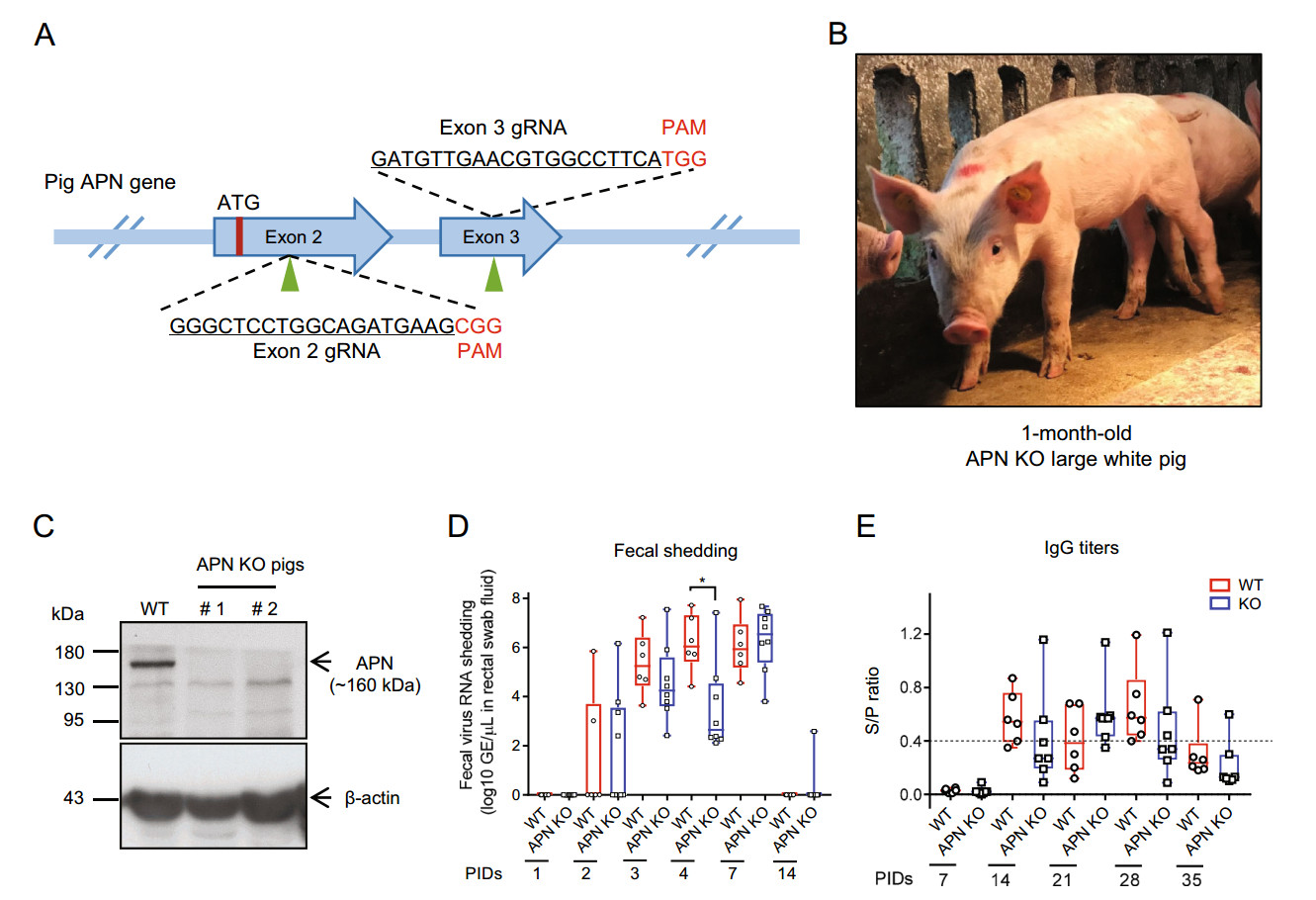-
Ji CM, Wang B, Zhou J, Huang YW (2018) Aminopeptidase-N-independent entry of porcine epidemic diarrhea virus into Vero or porcine small intestine epithelial cells. Virology 517:16-23
doi: 10.1016/j.virol.2018.02.019
-
Lee C (2015) Porcine epidemic diarrhea virus: an emerging and re-emerging epizootic swine virus. Virol J 12:193
doi: 10.1186/s12985-015-0421-2
-
Li BX, Ge JW, Li YJ (2007) Porcine aminopeptidase N is a functional receptor for the PEDV coronavirus. Virology 365:166-172
doi: 10.1016/j.virol.2007.03.031
-
Li W, Li H, Liu Y, Pan Y, Deng F, Song Y, Tang X, He Q (2012) New variants of porcine epidemic diarrhea virus, China, 2011. Emerg Infect Dis 18:1350
doi: 10.3201/eid1803.120002
-
Li W, van Kuppeveld FJM, He Q, Rottier PJM, Bosch BJ (2016) Cellular entry of the porcine epidemic diarrhea virus. Virus Res 226:117-127
doi: 10.1016/j.virusres.2016.05.031
-
Li W, Luo R, He Q, van Kuppeveld FJM, Rottier PJM, Bosch BJ (2017) Aminopeptidase N is not required for porcine epidemic diarrhea virus cell entry. Virus Res 235:6-13
doi: 10.1016/j.virusres.2017.03.018
-
Li W, Hulswit RJG, Kenney SP, Widjaja I, Jung K, Alhamo MA, van Dieren B, van Kuppeveld FJM, Saif LJ, Bosch BJ (2018) Broad receptor engagement of an emerging global coronavirus may potentiate its diverse cross-species transmissibility. Proc Natl Acad Sci U S A 115:E5135-E5143
doi: 10.1073/pnas.1802879115
-
Miller LC, Crawford KK, Lager KM, Kellner SG, Brockmeier SL (2016) Evaluation of two real-time polymerase chain reaction assays for Porcine epidemic diarrhea virus (PEDV) to assess PEDV transmission in growing pigs. J Vet Diagn Invest 28:20-29
doi: 10.1177/1040638715621949
-
Niederwerder MC, Nietfeld JC, Bai J, Peddireddi L, Breazeale B, Anderson J, Kerrigan MA, An B, Oberst RD, Crawford K, Lager KM, Madson DM, Rowland RR, Anderson GA, Hesse RA (2016) Tissue localization, shedding, virus carriage, antibody response, and aerosol transmission of Porcine epidemic diarrhea virus following inoculation of 4-week-old feeder pigs. J Vet Diagn Invest 28:671-678
doi: 10.1177/1040638716663251
-
Shirato K, Maejima M, Islam MT, Miyazaki A, Kawase M, Matsuyama S, Taguchi F (2016) Porcine aminopeptidase N is not a cellular receptor of porcine epidemic diarrhea virus, but promotes its infectivity via aminopeptidase activity. J Gen Virol 97:2528-2539
doi: 10.1099/jgv.0.000563
-
Stevenson GW, Hoang H, Schwartz KJ, Burrough ER, Sun D, Madson D, Cooper VL, Pillatzki A, Gauger P, Schmitt BJ, Koster LG (2013) Emergence of porcine epidemic diarrhea virus in the United States: clinical signs, lesions, and viral genomic sequences. J Vet Diagn Invest 25:649-654
doi: 10.1177/1040638713501675
-
Sun M, Ma J, Wang Y, Wang M, Song W, Zhang W, Lu C, Yao H (2015) Genomic and epidemiological characteristics provide new insights into the phylogeographical and spatiotemporal spread of porcine epidemic diarrhea virus in Asia. J Clin Microbiol 53:1484-1492
doi: 10.1128/JCM.02898-14
-
Whitworth KM, Lee K, Benne JA, Beaton BP, Spate LD, Murphy SL, Samuel MS, Mao J, O'Gorman C, Walters EM, Murphy CN, Driver J, Mileham A, McLaren D, Wells KD, Prather RS (2014) Use of the CRISPR/Cas9 system to produce genetically engineered pigs from in vitro-derived oocytes and embryos. Biol Reprod 91:78
-
Whitworth KM, Rowland RR, Ewen CL, Trible BR, Kerrigan MA, Cino-Ozuna AG, Samuel MS, Lightner JE, McLaren DG, Mileham AJ, Wells KD, Prather RS (2016) Gene-edited pigs are protected from porcine reproductive and respiratory syndrome virus. Nat Biotechnol 34:20-22
doi: 10.1038/nbt.3434
-
Whitworth KM, Rowland RRR, Petrovan V, Sheahan M, Cino-Ozuna AG, Fang Y, Hesse R, Mileham A, Samuel MS, Wells KD, Prather RS (2019) Resistance to coronavirus infection in amino peptidase N-deficient pigs. Transgenic Res 28:21-32
doi: 10.1007/s11248-018-0100-3














